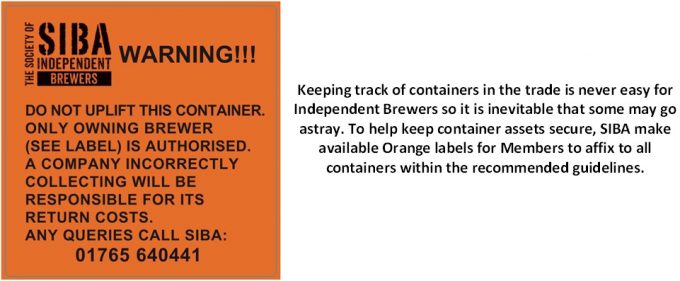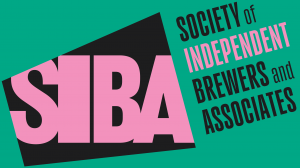
Containers

- Spa Trak
Login to Spa Trak to view where your containers are. For any enquires regarding the Kegwatch Spa Trak system, please contact Kegwatch on info@kegwatch.co.uk
- Keg & Cask Disposal & Scrapping (TC 423) and Accredited Scrap Yards
Keg and Cask disposal and scrapping accreditation. Includes list of accredited sites
Click here for accredited sitesClick here for Keg & Cask disposal and scrapping best practice guidelines
As the problem of keg and cask losses has grown, it has become apparent that an industry accredited and audited system for disposing of casks and kegs is essential to reduce the risk of misappropriation and enhance the chances of a successful prosecution in the event of illicit handling and disposing of containers.
The objective of the attached best practice is to ensure:
* Containers are only sold or scrapped by the containers’ legitimate owner or their appointed representative.
* Containers sold for scrapping are actually scrapped.All scrap yards seeking accreditation must be sponsored by a brewery, ideally their closest local brewer. If BBPA members wish to nominate their local scrap yard for accreditation they should first provide a copy of the latest version of TC423 to the yard before contacting Steve Livens at the BBPA with all necessary contact details who will coordinate the process further.
Kegwatch Ltd, on behalf of the industry, will carry out the accreditation process. Once completed, details will be posted on the BBPA website. Whilst we would recommend that brewers use only accredited scrap yards, the scheme is entirely voluntary and brewers are in no way obliged to do so.Click here to go to the BBPA page.
- Keg & Cask Supply Chain Best Practice (TC 418)
SIBA members have agreed to abide by the container best practice document.
Download TECH-418 v3 KEG CASK SUPPLY CHAIN BEST PRACTICE (ALL STAKEHOLDERS) JAN 2017
Download TECH-418 v3 – Attachment – Best Practice Checklists
- Minimising Levels of Aluminium within Beer (TC 447)
Download TECHNICAL CIRCULAR No. 447
- Colour Banding
THE COLOUR BANDING REGISTER IS CURRENTLY MOVING TO A NEW SERVER. APOLOGIES FOR ANY INCONVENIENCE CAUSED
The Latest Cask Colour Banding Register CLICK HERE FOR THE REGISTER
About Cask Colour Banding
The British Beer and Pub Association (BBPA) & Society of Independent Brewers (SIBA) maintain an informal container colour band registration scheme on behalf of UK brewers.
The colour band combinations are created using colours:Black 00-E-53 (9005)
Light Green 12-E-53 (6018)
Blue (light) 18-E-51 (5012)
Spruce Green 14-C-39 (6005)
Blue (mid) 18-E-53 (5005)
Orange 06-E-51 (2003)
Brown 08-B-29 (8016)
Red 04-E-53 (3020)
Yellow 10-E-53 (1018)
White 00-E-55 (9003)
Cream (No RAL)
Gold (No RAL)
Grey (No RAL)
Purple (No RAL)
Pink (No RAL)The colours shades derive from the British Standard BS 4800 series (1972) but similar shades are also used from the RAL system.
The bands are applied side by side, separated by a small gap, usually between the rolling rings of the containers.
– Single Bands are only noted to be in use because these pre-dated the scheme and were not allocated on an organised basis.
– Double Bands were originally registered by the BBPA exclusively on behalf of individual companies. However, some smaller brewers adopted similar colour bands without knowledge of the registration scheme and every effort has been made since to avoid duplication.
– Triple Bands were adopted when double colour combinations were exhausted.Any queries or amendments should be directed to containers@siba.co.uk.
This is a voluntary system with the aim of avoiding duplication. The BBPA and SIBA cannot be held responsible for any errors or misunderstandings arising from the sorting/collection of containers.
Colour bands should be regarded as an aid to identification and not a definitive system.
Containers should be identified by all means available, i.e. brewers name stamped on container, product labels etc.



